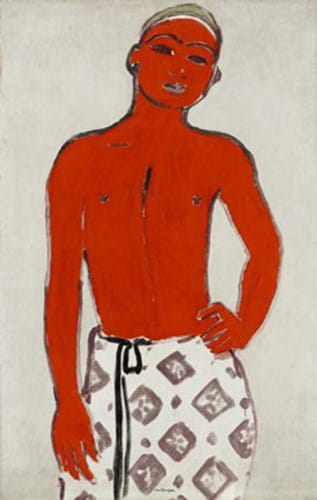
The auctioneers, predictably, were keen to emphasise the signs of recovery, especially after Sotheby's evening sale on November 4 saw some keen bidding battles that sparked claims of a return to the kind of competitive buying seen before the dramatic downturn at the end of last year.
The sale saw a hammer total of $159m (£101m), towards the upper end of the $116m-165m presale estimate.
Selling 56 out of 66 lots (85 per cent), it cannot be denied that this was the best performing major auction in the modern and contemporary arena since the financial crisis hit the art market.
However, Sotheby's total was still down on the $197m (£120m) for the equivalent sale last year.
Furthermore, Christie's sale the night before was both smaller and patchier, with the $56.9m (36.2m) hammer total coming in below the $68.7m- $97.2m pre-sale estimate. Here, 28 of the 40 lots on offer found buyers (70 per cent).
The overall hammer total for the Impressionist and Modern week, including day sales, was $260m (£166m), which was slightly down on the equivalent total in November last year and well down on the mammoth premium-inclusive $804m (£402m) seen in November 2007.
While both auction houses saw some confident bidding where quality works were pitched at realistic levels, there is still a considerable distance to go before it can be called a full recovery.
The better response seen at Sotheby's evening sale was largely down to a handful of key consignments.
Twenty-seven works came from the collection of the Dutch financier Louis Reijtenbagh following the resolution of three lawsuits filed against him by international banks.
Twenty-two of the works sold at Sotheby's, contributing a third of the sale total. These included a record price for Kees van Dongen (1877-1968), whose Jeune Arabe from 1910 found five bidders before it was knocked down to a private collector at $12.25m (£7.8m) against a $7m-10m estimate.
Even more competition emerged on the top lot, an impressive bronze sculpture by Alberto Giacometti (1901-1966) which was being sold by the publishing magnate S.I. Newhouse Jr, who owns Condé Nast.
L'Homme qui Chavire, cast in 1951 in an edition of six, was apparently bought by Newhouse for around $20m. Here, estimated at $8m-12m, it drew six bidders and took $17.2m (£10.9m) from a private collector.
Another artist's record came for André Derain's (1880-1954) colourful Barques au Port de Collioure c.1905, which sold at $12.5m (£7.96m) to Guy Bennett, the former head of Christie's New York Impressionist department who is now a private dealer. He was bidding in the room while talking to his client on the phone. Against a $6m-8m estimate, it drew six interested parties and doubled the previous high for the artist.
Sotheby's also had seven paintings from the collection formed by the legendary dealer art Paul Durand-Ruel that all sold for a combined $16.4m (£10.4m).
Uppermost among them was Camille Pissarro's (1831-1903) Le Pont Boieidieu et la Gare d'Orleans, Rouen, which sold to the artist's great-grandson, Lionel Pissarro, of the New York and Paris private dealership Giraud Pissarro Segalot, for $6.2m (£3.95m).
The prize lot in the five works consigned from the collection of Arthur M. Sackler, the arts philanthropist who died in 1987, was Wassily Kandinsky's (1866-1944) Krass und Mild (Dramatic and Mild), which was knocked down at $9.4m (£5.99m) to a telephone buyer bidding through a member of staff from Sotheby's Russian department.
With Sotheby's securing the cream of the consignments, Christie's sale the evening before looked significantly thinner.
Their star offering, Pablo Picasso's (1881-1973) Tête de Femme, a portrait of Dora Maar from 1943, went unsold against a $7m-10m estimate, although Edgar Degas' (1834-1917) Danseuses generated a decent competition against a $7m-9m estimate, selling at $9.5m (£6.05m) to an Asian private buyer on phone.
Further bidding battles emerged on a lifetime cast of Auguste Rodin's (1940-1917) The Kiss, which made $5.6m (£3.57m) against a $1.5m-2m estimate and sold to New York dealer Christopher Eykyn, and Tamara De Lempicka's (1898-1980) Portrait du Marquis Sommi from 1925 that made $3.8m against a $2m-3m estimate.
Amongst a number of works to generate strong bidding at the Impressionist and Modern day sales was Der Neue Mensch by German dadaist George Grosz (1893-1959). The 1921 watercolour sold at Christie's for $1.1m (£700,635) against a $300,000-500,000 estimate.
Overall, Christie's 232-lot day sale, including the works on paper sale, made a hammer total of $18.7m (£11.9m), while Sotheby's 219-lot day sale made $25.4m (£16.2m).
By Alex Capon
£1 = $1.57
The buyer's premium at Sotheby's and Christie's is both 25/20/12 per cent.




